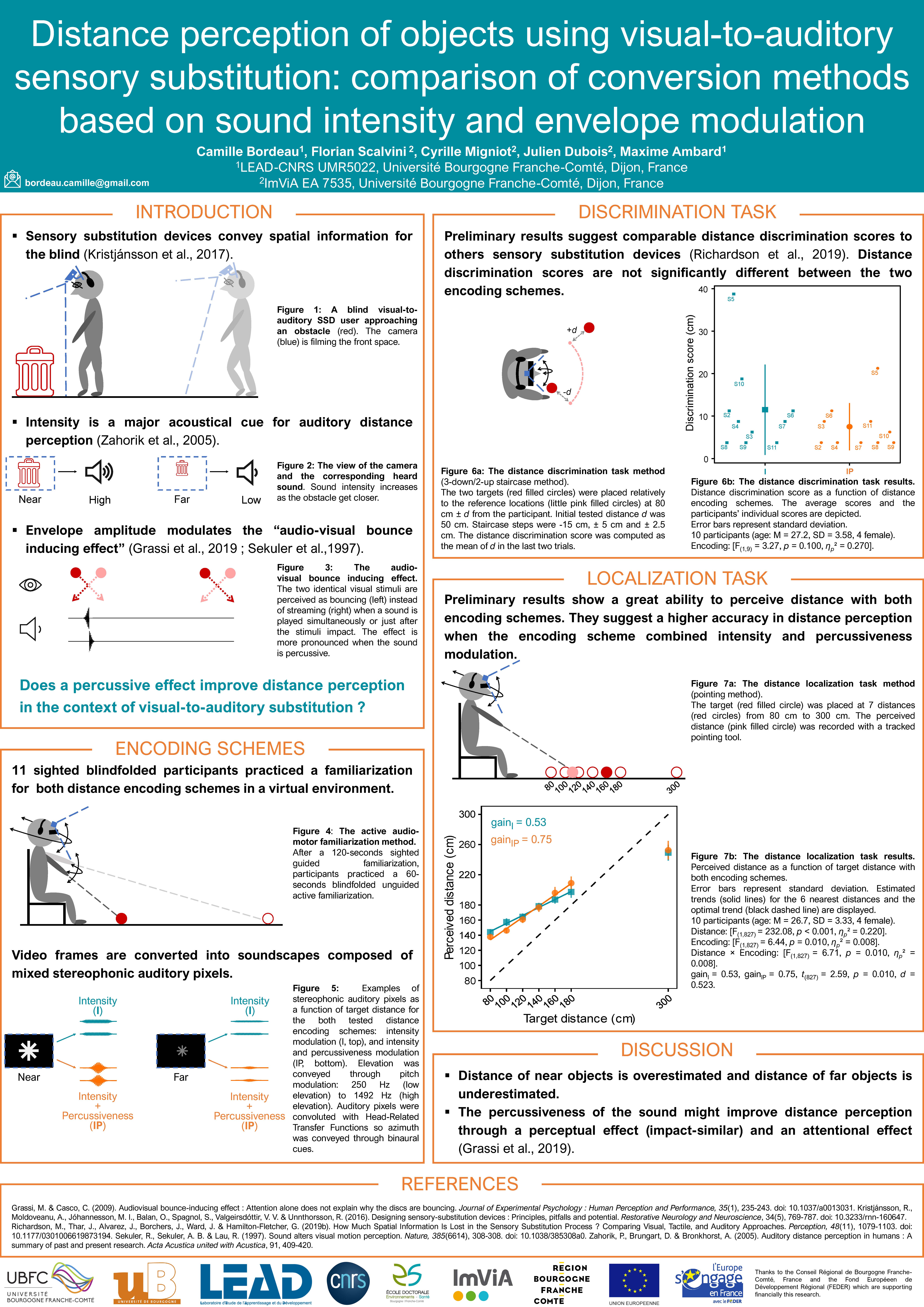Visual-to-auditory sensory substitution devices are assistive devices for the blind that convert visual images into soundscapes by converting visual features into auditory cues. To convey spatial information with sounds, several sensory substitution devices use a Virtual Acoustic Space using Head Related Transfer Functions recordings to synthesize natural acoustic cues used for sound localization. However, these recordings are often acquired from one or a few sound source distances. Consequently, additional acoustic cues are often added to the signal to convey information about distance.
In this study, we investigated the early-stage ability to judge the relative distance of two objects using soundscapes provided by a visual-to-auditory sensory substitution device.
Our experiment aimed to compare methods to convey distance using audio signal intensity and envelope modulation of the sound.
Blindfolded participants had to discriminate the distance of two virtual targets using soundscapes. We tested two visual-to-auditory conversion methods for distance: one using sound intensity modulation, and one using the same sound intensity modulation but associated with an audio signal envelope modulation.
Results show that participants perceived relative distance of objects using soundscapes provided by both conversion methods with a better performance while coupling the intensity modulation with an envelope modulation. These results provide evidence that modulation of audio signal envelope is an interesting method to emphasize information relative to distance in visual-to-auditory sensory substitution devices.
Distance perception of objects using visual-to-auditory sensory substitution: Comparison of conversion methods based on sound intensity and envelope modulation
